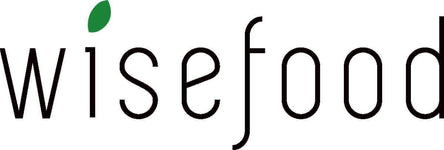Climate-friendly and sustainable alternatives to Wisefood's disposable bottles
Our sustainable and climate-friendly products from Wisefood.eu can remedy this confusion of different reusable systems. With our innovative products, we have completely adapted to the changing needs of the environmentally conscious generation of consumers. After all, why should enjoying a soft drink be associated with a guilty conscience?Our climate-neutral stainless steel bottle is ideal for taking away a wide variety of drinks that are normally filled in disposable bottles. Whether mineral water, juices or spritzers: the Wiseware stainless steel bottle is a real alternative to conventional plastic bottles. In this way, you can determine the content yourself and there is no need to search for return options for the deposit.
In addition, our reusable cups for cold and hot drinks offer an ideal alternative to standard paper cups for the popular "to-go" drink.
The most frequently asked questions and answers about disposable bottles
1. Are disposable glass bottles more climate-friendly than plastic bottles?Glass is not an environmentally friendly alternative. Because non-returnable glass bottles, which belong in the old glass container, are recycled more often. If you want to live in an environmentally friendly and climate-conscious way, you should still refrain from using disposable glass bottles, as the energy requirement for recycling glass is extremely high.
2. Are returnable bottles disposable or reusable?
The website of the Ministry of the Environment makes it very clear that returnable bottles are not synonymous with returnable bottles. Because the packaging ordinance stipulates that a deposit must be paid on those one-way bottles in Germany that are considered to be ecologically problematic. It should also be noted that even returnable bottles in returnable crates are not necessarily returnable bottles. Reusable bottles can only be clearly identified by the reusable symbol.
3. Why reduce the use of PET bottles?
Harvard University states an average consumption of 2.5 million plastic bottles per hour for the USA. Each individual bottle takes about 450 years to fully decompose. Furthermore, the production of a single plastic bottle consumes 250 ml of petroleum. These numbers illustrate an unnecessary waste of finite resources.
4. Can I protect the climate by not using single-use bottles?
According to the German Environmental Aid, around 21 billion liters of soft drinks are consumed in Germany every year. If these quantities were only filled in returnable bottles, carbon dioxide emissions could be reduced by 1.25 million tons compared to the current situation. The answer to the question of whether you can protect the climate by doing without disposable bottles is clearly yes!
5. Health risks of disposable plastic bottles
According to a report by the BBC, the WHO announced that it intends to carry out a study on the health risks of disposable PET bottles, although PET bottles are generally not considered to be hazardous to health. Speaking to the British media, the UN water coordinator expressed his concerns about the chemical composition of some water bottles. Above all, the long-term effects of microplastics on the human organism have not yet been adequately researched. Only recently did researchers succeed in proving that the smallest titanium oxide particles can penetrate the intestinal mucosa. According to scientists, the question now arises as to whether this could also be the case with microplastics.
6. How to avoid plastic bottles? Wisefood solutions
The magazine Ökotest last checked the quality of tap water in Germany in 2019 and confirmed compliance with the strict drinking water ordinance in all samples. According to the Ökotest, the responsible health authorities also regularly check the quality of the tap water. They came to the conclusion that more than 99 percent of all measured values met the requirements and sometimes even exceeded them.
Our climate-neutral Wiseware stainless steel bottle is an ideal replacement for conventional PET bottles. Can be filled with any soft drink as you like, and can be wonderfully combined with your own tap water. Our sustainable reusable cups with and without lids are suitable for coffee to go.
Together with our customers, we work to make climate-friendly alternatives more conscious in order to preserve the environment and protect the earth from harmful waste in the long term.
Sources
https://www.nabu.de/umwelt-und-RESOURCES/RESOURCES SCHONUNG/einzelhandel-und-umwelt/mehrweg/nabumehrwegguide.html
https://www.quarks.de/umwelt/muell/so-were-plastic-bottles-recycled/
https://www.bbc.com/news/science-environment-43389031
https://www.sueddeutsche.de/wirtschaft/mehrweg-quote-pfand-problem-1.5393251
https://www.bmu.de/themen/wasser-RESOURCES-Waste/Circulation Economy/waste-types-waste-streams/packaging-waste/deposit-bottle-reusable-bottle
https://green.harvard.edu/tools-resources/case-study/solving-plastic-problem-one-cup-and-bottle-time#RecycleAcrossAmerica
https://www.oekotest.de/essen-trinken/Leitungswasser-trinken-Better-als-Mineralwasser-aus- Flaschen-Das-sind-die-Gruende_11316_1.html






